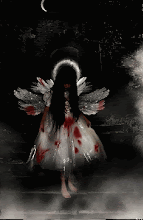untuk lebih tahu,gua saja-saja surf internet cari maklumat pasal spisis sakit-sakit yang melibatkan kepala.yang major dan fatal tu,malas la nak cerita dan mintak simpang jauh-jauh.kanser otak,brain tumor,aneurysm,stroke,pendarahan otak,miningtis dan segala macam mak nenek jenis penyakit kepala otak yang membawa maut,gua sendiri tak nak fikir banyak-banyak.salah satu daripada spisis penyakit tu adalah penyakit yang menyebabkan kematian mak gua.mengerikan.nauzubillah.well,apa-apa pun,gua baca tentang headache.walaupun semua orang tahu headache tu apa tapi sekadar menambah ilmu pengetahuan,tak cedera pun.bila baca gua dapat tahu pasal sakit kepala yang melibatkan kesakitan di kawasan mata.it's called cluster headache atau en wiki cakap nama manja dia adalah 'suicide headache'.walaupun gua tak rasa ada orang nak baca,tapi sekadar berkongsi knowledge.
A cluster headache is a rare type of headache that is more common in men. Cluster headaches start suddenly. The pain is usually behind or around one eye and is very severe. The eye and nose on the same side as the pain may become red, swollen and runny. Cluster headaches also cause restlessness. These headaches can be frightening to the sufferer and his or her family.
A cluster headache can last a few minutes or several hours, but it usually lasts for 45 to 90 minutes. Cluster headaches typically occur at the same time each day for several weeks, until the "cluster period" is over. The most common times for cluster headaches seem to be between 1:00 a.m. and 2:00 a.m., 1:00 p.m. and 3:00 p.m. and around 9:00 p.m. Cluster periods usually last 4 to 8 weeks and may occur every few months. At other times, no cluster headaches will occur.
The first attack most frequently arises during adolescence or the early 20s. Many patients report that alcohol triggers an attack. Others report that stress, glare, or ingestion of specific foods may trigger an attack. There is usually no family history of similar headaches.
A typical cluster headache starts suddenly and without warning. In half of the cases, the attack awakens the patient within two hours of falling asleep. The attack may begin with a sensation of pressure in the eye or temple. The pain is unilateral, constant and severe. The excruciating pain reaches a peak within 15 minutes.
Individual attacks usually last less than two hours. Towards the end of the attack, the patient may experience additional paroxysms of stabbing pain superimposed on the constant severe pain.
In contrast to patients with migraine headaches, patients with cluster headaches are restless, active, and even violent during attacks. Most apply pressure or cold to the painful area, and many attempt to keep the head low but avoid lying down, since this position can initiate and increase cluster headache pain.

Tiada ulasan:
Catat Ulasan